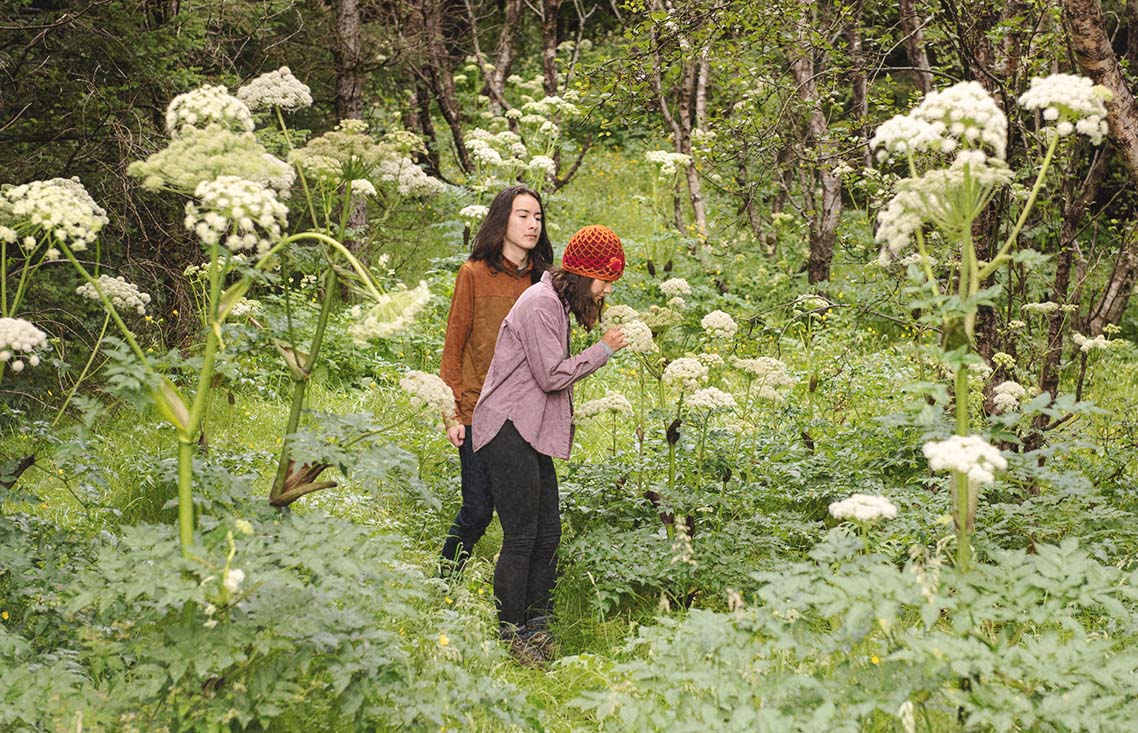Permaculture’s fundamental
12 Principles
A guide for holistically sustainable designs
For permaculturists, these 12 Principles are the main guidelines for any landscape design creation, implementation and maintenance. Attending to them allows us to have a holistic sustainability based mindset and take actions accordingly, in order to positively influence the environment.
01
Observe & interact
First and foremost, take time to engage with Nature and discover what circumstances our targeted environment presents. There are stories that the land is trying to tell us: when we are being observant, we learn to speak its language in order to relate. Only after this, can we interact with it in a mutually beneficial way. So to say, this would be the first to implement of the 12 principles.
02
Catch and store energy
Develop systems that collect resources at peak abundance, to use it later in times of need. An ecosystem is a continuous producer, and as the land’s residents, we shall steward its energy responsibly.
e.g. Rainfall capture systems use barrels, swales, and rain gardens to efficiently collect rainwater for irrigation.
03
Design from patterns to details
Observe patterns in Nature and use them to inspire the designs, and add further details only later. When we examine the natural world, we will notice the reasons behind its pattern development, and how they are being applied recurrently across wide and small scales.

04
Use edges and value the marginal
The boundary between elements is where the most fascinating events take place. These are often the system’s most valuable, diverse, and productive parts.
e.g. The forest-meadow ecotone thrives with unique species of two ecosystems, benefitting from diverse sunlight and varied moisture levels.
05
Apply self-regulation and accept feedback
Perfection does not exist in any design, because it is impossible to comprehend the needs of each organism, especially in ever-changing conditions. Therefore it is vital to accept feedback, to ensure that the established systems function soundly throughout their evolution.
06
Use and value renewable resources and services
Nature is inherently abundant in supplies and services. By observing which ones are renewable and locally available, and consciously harvesting its benefits, we can reduce consumption and avoid dependence on non-renewable resources.

07
Produce no waste
Every element can find a practical place in a well-designed system. Learn to see how what is now viewed as “waste” can be perceived as an asset, but produce no excessive rubbish. Recognise, value and use the locally available resources.
e.g. Major part of the food waste from a our meals can be turned into some type of compost, transforming scraps into nutrient rich soil.
08
Use and value diversity
Diversity reduces system-level vulnerability to threats, because the setup of one function relying on multiple elements is more stable. Complexity of plant, animal and human communities facilitate resiliency, balance and health.
e.g. A monoculture farm is highly susceptible to weather extremes like hail or frost, risking total seasonal loss. In contrast, a diverse polyculture orchard is more resilient; while one fruit type may suffer, others may thrive, preserving overall yield.
09
Integrate rather than segregate
It is important to recognize the plentiful benefits that interaction of diverse elements can bring about for ecological networks. When relationships develop between design features, they can find means to collaborate and support each other through completing each other’s shortcomings. The more connections form between diverse elements, the stronger the web of life becomes, meaning it develops more resiliency. Segregation on the other hand weakens the system due to the lack of bonds.

10
Use small and slow solutions
Small and slow solutions mimic the flow of Natural succession, instead of forcing change to occur in the fast rate that are used to on a human-scale. Therefore, they are more gentle approaches and produce more sustainable outcomes on the long term.
11
Creatively use and respond to change
Change is inevitable, because it is the attempt of the parts of a system to evolve. When we anticipate and observe it, we are prepared to make sensible decisions about how we respond to it. Depending on our perception, change can either be to our advantage or disadvantage. When we are open to it and practice resourcefulness, we can deal with it in a smooth and cooperative way.
12
Obtain a yield
In permaculture, our goal is to create designs and run projects that will deliver yields. In permaculture “yield” is understood holistically. It means universal enrichment of ecosystem services which support human communities and the bionetwork, and even improve throughout time.

„The 12 principles of permaculture have been created to guide us towards a holistic mindset and action.”
Let’s Talk GET IN TOUCH Let’s Talk GET IN TOUCH Let’s Talk GET IN TOUCH Let’s Talk GET IN TOUCH

